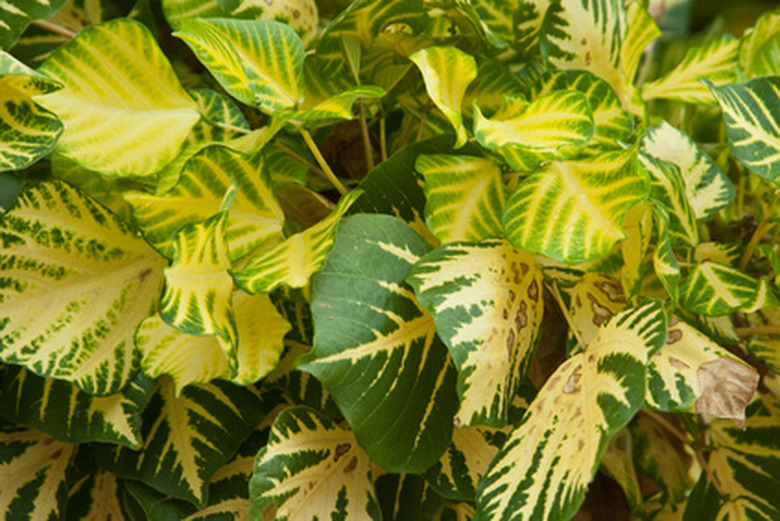High School Science Experiments With Plants
High school science experiments can be designed to inform students about the different aspects of plant life. Experiments that promote critical thinking and reflection allow students to develop theories about different areas of biology and botany. Students can study the structural parts of the plant, functional aspects and reproductive factors of plants.
How Does Temperature Affect the Xylem in Tomato Plants?
How Does Temperature Affect the Xylem in Tomato Plants?
This experiment involves testing the size of the xylem in Roma tomato plants when exposed to different temperatures. Students need six Roma tomato plants, six pots, planting soil, a small and large beaker, blue dye, water, ice, heat lamp, microscope and thermometer. Add soil to the pots and put the plants into the pots, burying the roots. Place the six pots in six different locations–under a heat lamp, in the shade, in the sun, in the fridge, in the freezer and in ice. Give each plant 300 ml of water containing 25 ml of blue dye each day. Observe the plants over three weeks and record observations. After three weeks, cut off a piece of each plant 2 inches from the root and examine the xylem under a microscope. Students note the size of the xylem of the six plants and draw conclusions about temperature effects on xylem.
Can a Plant Grow From the Top of a Carrot?
Can a Plant Grow From the Top of a Carrot?
The carrot-top experiment involves students researching whether a plant can grow and get the nutrients needed from a carrot top. Students need four carrots and a shallow container. First, cut off the top of the carrot about a half-inch away from the leaves. Carefully cut the leaves off the top, keeping it close to the base. Place the carrots in the container with the cut side facing downward and add water to cover half the carrot top. Put the container into a well-lit windowsill and observe the carrot tops daily for any changes. Use a ruler to measure the growth of leaves or roots out of the tops and record the data in a table. Continue the experiment for a week and draw conclusions based on reasons for the growth of leaves from the tops.
How Do Some Plants Grow by Themselves?
How Do Some Plants Grow by Themselves?
This experiment allows students to study asexual reproduction by vegetative propagation. Students learn about the different asexual organs and their functions in specific plants. Students need two 1-liter jars, scissors, distilled water and a geranium plant. First, fill the jars to three-quarters with distilled water. Cut four healthy stems with leaves from the geranium plant. Place two stems with the cut ends facing down into each jar. Put the jars into direct sunlight on a windowsill. Make observations about the cut ends of the stems every day for two to three weeks. Students see roots growing from the ends of the stem, which can later be planted and will grow into a new geranium plant. This experiment allows students to investigate the concept of asexual reproduction, and they later can observe the new plant become identical to the parent plant.
References
Cite This Article
MLA
Wehner, Amanda. "High School Science Experiments With Plants" sciencing.com, https://www.sciencing.com/high-school-science-experiments-plants-6389348/. 22 November 2019.
APA
Wehner, Amanda. (2019, November 22). High School Science Experiments With Plants. sciencing.com. Retrieved from https://www.sciencing.com/high-school-science-experiments-plants-6389348/
Chicago
Wehner, Amanda. High School Science Experiments With Plants last modified August 30, 2022. https://www.sciencing.com/high-school-science-experiments-plants-6389348/
